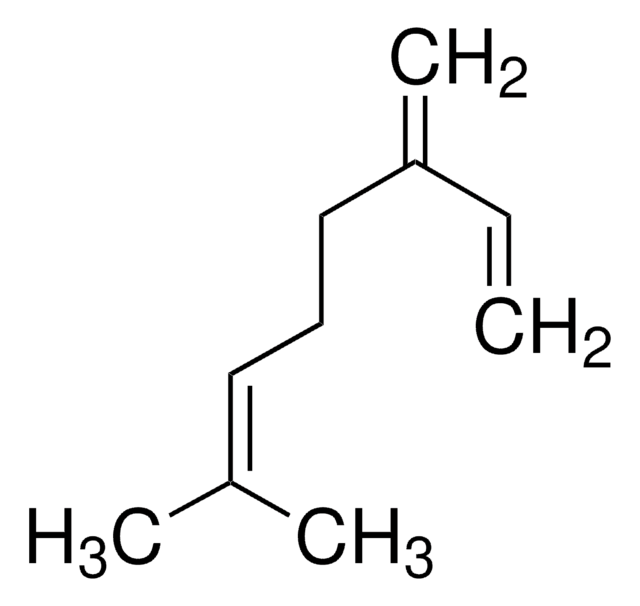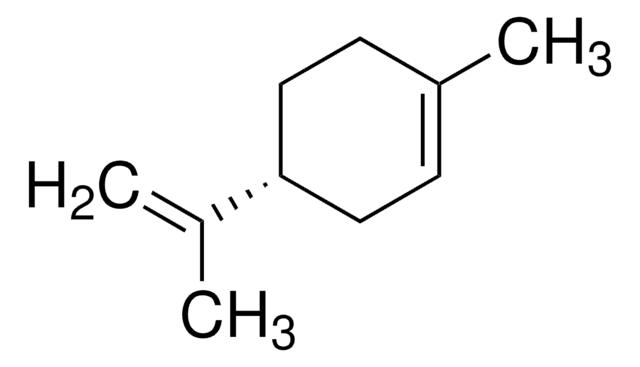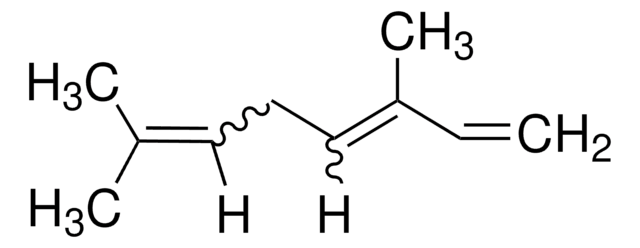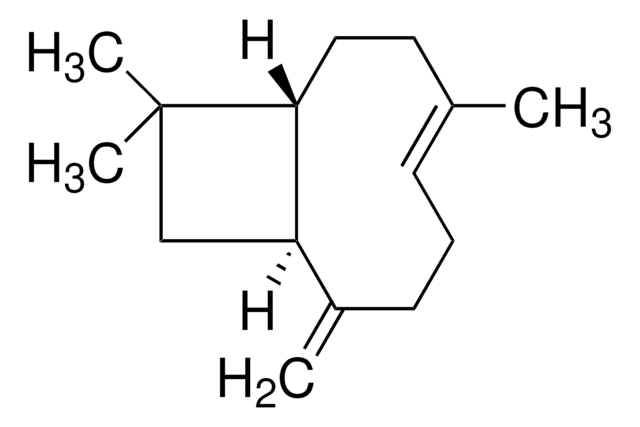04600585
Myrcene
primary reference standard
Synonym(s):
β-Myrcene, 7-Methyl-3-methylene-1,6-octadiene
About This Item
Recommended Products
grade
primary reference standard
vapor density
4.7 (vs air)
vapor pressure
~7 mmHg ( 20 °C)
shelf life
limited shelf life, expiry date on the label
manufacturer/tradename
HWI
refractive index
n20/D 1.469 (lit.)
bp
167 °C (lit.)
density
0.791 g/mL at 25 °C (lit.)
application(s)
food and beverages
storage temp.
−20°C
SMILES string
C\C(C)=C/CCC(=C)C=C
InChI
1S/C10H16/c1-5-10(4)8-6-7-9(2)3/h5,7H,1,4,6,8H2,2-3H3
InChI key
UAHWPYUMFXYFJY-UHFFFAOYSA-N
Looking for similar products? Visit Product Comparison Guide
General description
Exact content by quantitative NMR can be found on the certificate.
Application
Signal Word
Danger
Hazard Statements
Precautionary Statements
Hazard Classifications
Aquatic Acute 1 - Aquatic Chronic 1 - Asp. Tox. 1 - Eye Irrit. 2 - Flam. Liq. 3 - Skin Irrit. 2
Storage Class Code
3 - Flammable liquids
WGK
WGK 3
Flash Point(F)
111.2 °F - closed cup
Flash Point(C)
44 °C - closed cup
Regulatory Information
Choose from one of the most recent versions:
Certificates of Analysis (COA)
Don't see the Right Version?
If you require a particular version, you can look up a specific certificate by the Lot or Batch number.
Already Own This Product?
Find documentation for the products that you have recently purchased in the Document Library.
Protocols
-β-Farnesene; α-Huµlene; Germacrene D; (+)-Valencene; Bicyclogermacrene; (+)-δ-Cadinene
Our team of scientists has experience in all areas of research including Life Science, Material Science, Chemical Synthesis, Chromatography, Analytical and many others.
Contact Technical Service







